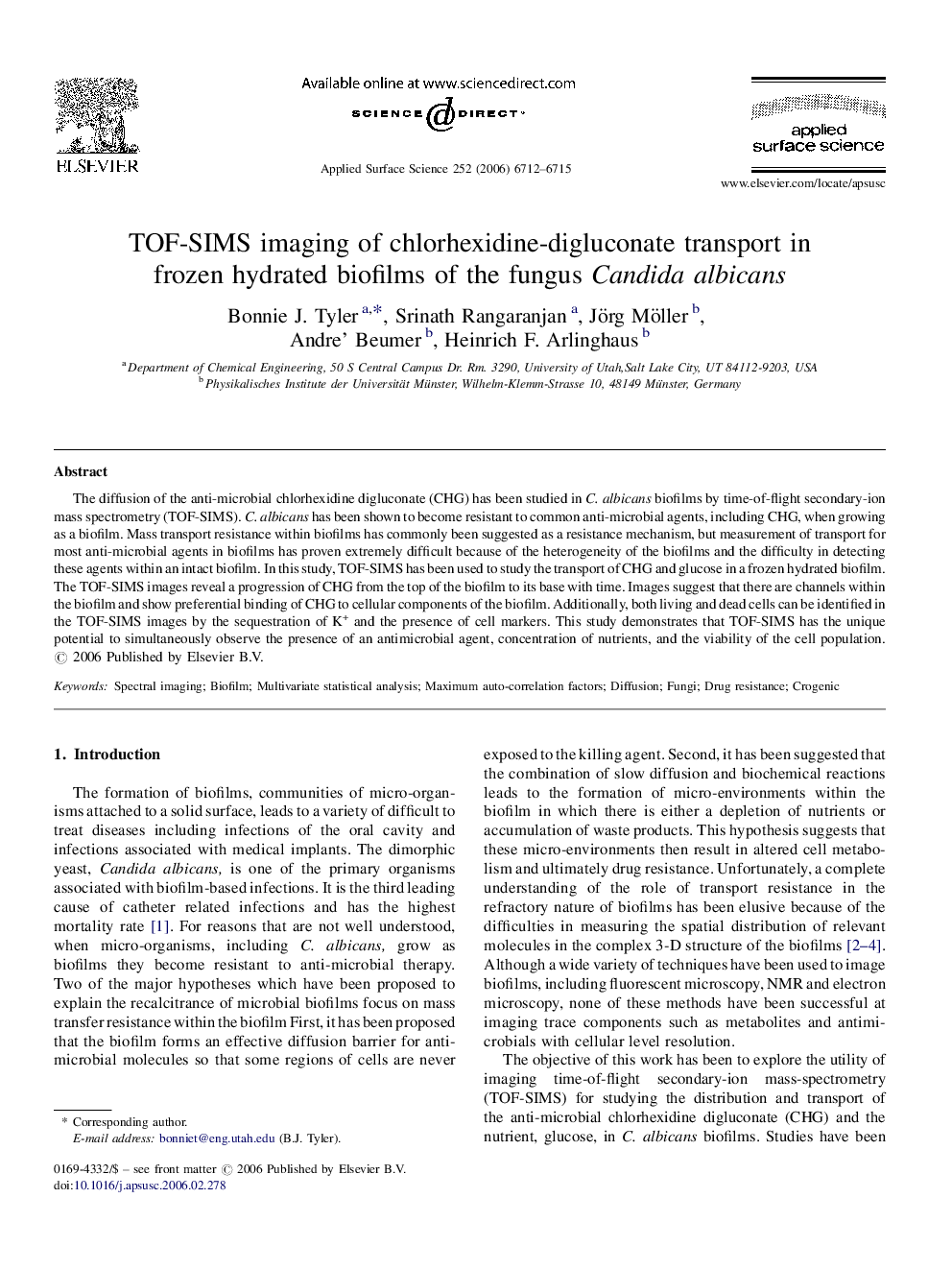| Article ID | Journal | Published Year | Pages | File Type |
|---|---|---|---|---|
| 5368875 | Applied Surface Science | 2006 | 4 Pages |
The diffusion of the anti-microbial chlorhexidine digluconate (CHG) has been studied in C. albicans biofilms by time-of-flight secondary-ion mass spectrometry (TOF-SIMS). C. albicans has been shown to become resistant to common anti-microbial agents, including CHG, when growing as a biofilm. Mass transport resistance within biofilms has commonly been suggested as a resistance mechanism, but measurement of transport for most anti-microbial agents in biofilms has proven extremely difficult because of the heterogeneity of the biofilms and the difficulty in detecting these agents within an intact biofilm. In this study, TOF-SIMS has been used to study the transport of CHG and glucose in a frozen hydrated biofilm. The TOF-SIMS images reveal a progression of CHG from the top of the biofilm to its base with time. Images suggest that there are channels within the biofilm and show preferential binding of CHG to cellular components of the biofilm. Additionally, both living and dead cells can be identified in the TOF-SIMS images by the sequestration of K+ and the presence of cell markers. This study demonstrates that TOF-SIMS has the unique potential to simultaneously observe the presence of an antimicrobial agent, concentration of nutrients, and the viability of the cell population.
